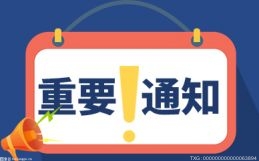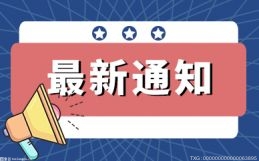世界短讯!原创EE——培养学术研究所必备的技能
(Please slide left for English version)
EE(Extended Essay,专题论文)是IBDP课程三大核心之一,是同学们撰写大学论文的一次“练兵”。在撰写EE的过程中,同学们深入探究课题,表达思想,进行令人信服的论证,有效培养同学们研究问题所必备的技能,并且为本科研究做准备。
EE写作从DP1(高二)第一学期开始,一直到DP2(高三)第二学期完成终稿,共历时两年。同学们可在所选修的六门基本课程的任意一门内容中,自行选择一个专题进行独立研究,并通过指导老师的辅导,完成一篇不超过4000个英文单词(中文EE不超过4800字)的学术研究论文。
 (资料图片仅供参考)
(资料图片仅供参考)
EE体现的是什么?
一、 学科热情和兴趣。
同学们需要选择自己感兴趣的科目,确定课题并展开学术研究。EE论文所体现出来对该学科的热情将有助于同学们日后申请相关大学专业。
二、 文献阅读和筛选能力。
在信息爆炸时代,我们能获取信息的平台众多,怎么去选择权威的、有公信力的、专业度高的平台,并在众多文献中进行选择,“取其精华,去其糟粕”,获取有效信息,需要较高的文献阅读和筛选能力,这些能力在学术写作中是必备的。
三、 学术写作能力。
EE让IB同学们得以在高中锻炼学术写作能力,帮助同学们在进入大学后进行学术研究写作。
四、 沟通能力。
在撰写EE的过程中,同学们需要和同学、专业相关的成年人以及论文导师进行沟通。如何进行有效沟通是同学们必修的课题。
五、自我管理能力。
一是时间管理能力,EE写作时长持续两年,在这个过程中,同学们需要合理安排时间,把握论文进度。二是情绪管理能力,在高二及高三,同学们会同时面临学科学习、竞赛、活动等多个任务,在多任务同时进行时的压力,同学们需要学会自如面对。
EE各学科选题例子
中文:语言如何影响危机公关的效果?——浅析阿里巴巴近五年公关稿的语言艺术
经济:The effect of increase in price of subway tickets on the sales of traffic card--Price Elasticity of Demand and Cross-price Elasticity of Demand (地铁票涨价对交通卡销售的影响--价格需求弹性和交叉价格需求弹性)
物理:Prediction and investigation of the time required to completely drain a cylindrical tank filled with water (预测和调查完全排空一个装满水的圆柱形水箱所需的时间)
数学:Line Stitching and Area: How to find the area underneath a polygon when two adjacent sides of a square are divided into nequal parts and the corresponding points on two sides are connected(线缝和面积:将一个正方形的两条邻边分成n个相同的部分,并连接两条边上相应的点,如何能够求出一个多边形下的面积)
艺术:An analysis of the localization of Catholic art in Lu Hong-nian"s paintings (陆鸿年绘画中的天主教艺术本土化分析)
EE是如何评分的?
EE是由IBO指定的评分员评分,EE评分分数范围在0到34分,总分将换算为以下五个等级(每年换算规则会有微调):
A – work of an excellent standard.
B – work of a good standard.
C –work of a satisfactory standard.
D – work of a mediocre standard.
E – work of an elementary standard.
△往年评分换算标准
注意!若EE论文评分为E等,学生将不能获得IBDP文凭。
这34分由5个部分组成,分别是:
Criterion A: 重点和方法 (6分)
Criterion B: 知识和理解 (6分)
Criterion C: 批判性思维 (12分)
Criterion D: 呈现方式 (4分)
Criterion E: 参与度 (6分)
其中值得一提的是参与度部分。在撰写EE过程中,同学们需要在DP1及DP2与导师进行三次正式会谈(Reflection Session),并在正式会谈后填写RPPF(Reflections on Planning and Progress Form, 反思报告),三次RPPF字数总共不超过500个英文单词(中文不超过600字),RPPF的质量直接影响最终E项评分。
除了正式会谈,同学们应保持每月至少一次与导师进行沟通(Check-in Session)。与导师沟通无次数上限,建议同学们主动与导师进行及时沟通。
广州外国语学校爱莎文华IBDP课程
EE时间轴:
高二
上学期
9-10月
新学期开学的时候就用专门的课时介绍EE概念及一般操作的引入和介绍
11月-1月
思考自己的EE学科、论题和导师人选
高二
下学期
2月-4月
确定EE论题及意向导师
5月-7月
确定论文大纲,完成第一次正式面谈(First Formal Reflection Session)
高三
上学期
7月-9月
EE初稿上交【提交第一次EE预估分】
10月-12月
EE反复修正【可更新成绩】,完成第二次正式面谈(The Interim Reflection Session)
高三
下学期
2月
EE定稿,完成EE答辩(即第三次正式面谈,Viva Voce (Final Reflection Session))
3月
上传EE终稿到IBO
撰写EE对于同学们来说,无疑是一个挑战,以下是给同学们的一些EE小贴士:
TIPS
1, 注意时间规划。
2, 调动主观能动性。导师在过程中的主要作用是把握整体方向,确认学术诚信,同学们应充分调动主观能动性,独立完成学术研究论文。
3, 强烈建议学生考虑兴趣及大学申请的专业,选择HL科目、与大学申请专业相关的科目开展EE。
4, 决不能抄袭、剽窃,甚至代写!
EE是绝大多数同学第一次独立完成一个研究课题,可以说是IB学习者高中阶段影响最深刻的学术经历。在撰写EE过程中,同学们能针对自己喜欢的主题提出问题,并将思考付诸实践进行系统地探索,也是一个让人有无比成就感的过程。希望同学们可以在EE中有满满收获!
(向右滑动查看中文)
EE (Extended Essay) is one of the three core elements of IBDP, and it is a "training" for students to write college papers. In the process of writing EE, students explore the topic in depth, express their thoughts, and make convincing arguments, which are intended to cultivate the skills necessary for students to research problems and prepare for undergraduate research.
EE writing starts from the first semester of DP1 (G11) with the final draft completed in the second semester of DP2 (G12), spaning a total of two years. Students may choose any topic for independent research in any one of the six subjects they have taken, and complete an academic research essay with no more than 4000 English words (no more than 4800 words if written in Chinese) with the guidance of the supervisor.
What Does EE Embody?
1. Enthusiasm and interest
in the subject
Students need to choose a subject they are interested in, determine the topic and conduct academic research. The enthusiasm for the subject reflected in the EE will help students apply for relevant university majors in the future.
2. Literature reading and
screening ability
In the era of information explosion, there are many channels for us to obtain information. To choose an authoritative, credible, and highly professional channel and "take the essence and discard the dross" among massive literature to obtain effective information require high level of literature reading and screening skills which are necessary in academic writing.
3. Academic writing ability
EE allows IB students to exercise their academic writing skills in high school and helps students to do academic research writing after entering university.
4. Communication skills
In the process of writing EE, students need to communicate with classmates, adults related to the topic, and their supervisor. To communicate effectively is a skill students must master.
5. Self-management ability
The first one is time management ability. EE writing lasts for two years. During this process, students need to arrange time reasonably and handle the progress of the essay. The second one is the ability to manage emotions. In the second and third years of high school, students will face multiple tasks such as subject learning, competitions, and activities at the same time. Students need to learn to deal with the pressure of multi-tasking.
Example topic for EE from each subject
Chinese:How does language affect the effect of crisis public relations? --Analysis of the art of language in Alibaba"s public relations drafts in the past five years
Economics:The effect ofincrease in price of subway tickets on the sales of traffic card--Price Elasticity of Demand and Cross-price Elasticity of Demand
Physics:Prediction and investigation of the time required to completely drain a cylindrical tank filled with water
Mathematics: Line Stitching and Area: How to find the area underneath a polygon when two adjacent sides of a square are divided into n equal parts and the corresponding points on two sides are connected
Arts:An analysis of the localization of Catholic art in Lu Hong-nian"s paintings
How is EE scored?
EE is scored by a rater designated by the IBO. The range of EE scores ranges from 0 to 34. The total score will be converted into the following five grades (the conversion rules will be fine-tuned every year):
A – work of an excellent standard.
B – work of a good standard.
C –work of a satisfactory standard.
D – work of a mediocre standard.
E – work of an elementary standard.
△Score conversion standard from previous years
Notice: If the EE is scored as E, the student will not be able to obtain the IBDP diploma.
The 34 points comprise 5 parts, namely:
Criterion A: Focus and Method (6分)
Criterion B: Knowledge and understanding (6分)
Criterion C: Critical thinking (12分)
Criterion D: Presentation (4分)
Criterion E: Engagement (6分)
One worth mentioning is the engagement part. In the process of writing EE, students need to have three formal talks (Reflection Session) with the supervisor in DP1 and DP2, and fill in the RPPF (Reflections on Planning and Progress Form) after the talks. The total number of words in the three RPPFs should not exceed 500 English words (no more than 600 words in Chinese), and the quality of them directly affects the final score in Criterion E.
In addition to formal talks, students should keep communicating with their supervisor (Check-in Session) at least once a month. There is no upper limit for the number of times to communicate with the supervisor. It is recommended that students take the initiative to communicate with the supervisor in a timely manner.
Guangzhou Foreign Language School ISA Wenhua IB Diploma Programme
EE timeline:
First semester of G11
September-October
When the new semester starts, teachers introduce the EE concepts and its general practices.
November-January
Students think about their EE subject, topic and supervisor candidates.
Second semester of G11
February-April
Students confirm the EE topic and intended supervisor.
May-July
Students finish the outline of the essay and complete the first formal talk (First Formal Reflection Session)
First semester of G12
July-September
Students submit the first draft of EE [Submittal of the first EE estimated score]
October-December
Students revise EE [score could be updated] and complete the second formal talk (The Interim Reflection Session)
Second semester of G12
February
EE is finalized, and EE defense is completed (Viva Voce (Final Reflection Session)).
March
Final draft of EE is uploaded to IBO.
Writing EE is undoubtedly a challenge for students. Here are some tips for students:
TIPS
1. Pay attention to time planning.
2. Mobilize subjective initiative. The main role of the supervisor in the process is to confirm the overall direction and academic integrity. Students should fully mobilize their subjective initiative and complete the academic research paper independently.
3. It is strongly recommended that students consider their interests and majors for university application, and choose HL subjects and subjects related to the majors for university application to carry out EE.
4. Never plagiarize, or even ghostwrite!
EE is the first chance for most students to complete a research topic independently, and it may be said to be the most profound academic experience for IB learners in high school. In the process of writing EE, students have the chance to ask questions about topics they like, and put their thinking into practice for systematic exploration, which is also a process that makes students feel extremely fulfilled. We hope students will gain a lot in writing EE!
标签:





